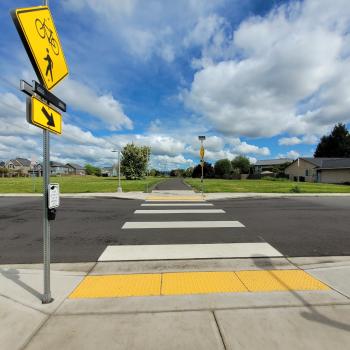 information.
information.
The ADA Public Right-of-way Transition Plan Phase I looks at the following types of facilities:
Future phases of the Transition Plan will look at:
We estimate that there are about 5,452 intersections in the County's road network.
This means an about 25,590 curb ramps in the County's public right-of-way. Most of these do not meet current ADA design standards and need improvement.
We do not have an inventory of curb ramps or pedestrian islands in the public right-of-way. A total inventory is time intensive and costly.
We estimated the number of curb ramps and other impacts based on the number of intersections.
We also looked at a sample area to get an idea of what kind of work is needed. We evaluated the number of impacts and barriers to access by evaluating a sample area. For this, we evaluated two urban unincorporated areas in Bethany and Aloha. These areas include a mixture of newer and older streets with diverse road classifications and zoning.
Barriers to access in the public right-of-way include physical barriers. These barriers may be due to facilities that do not meet ADA design standards.
Our ability to remove these barriers depends largely on funding. Ways we can fund ADA improvements include: